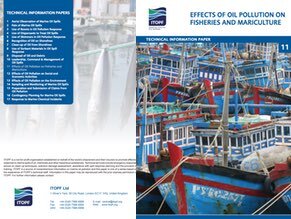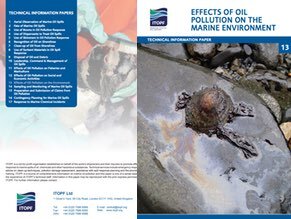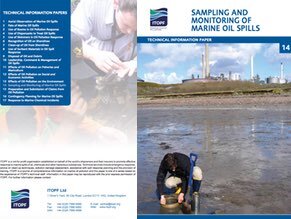Environmental Effects

The effects of oil spills can have wide ranging impacts that are often portrayed by the media as long lasting environmental disasters. Such perceptions are understandable as they are often fuelled by distressing images of oiled birds and other wildlife.
It is true that an oil spill can have severe short term effects, especially when organisms are considered on an individual basis. However, environmental impacts should always be measured in a scientific context and should be appraised at an ecosystem rather than individual level. In other words, it is important (or more representative of long term environmental effects) to base the extent of environmental damage on the effects to ecosystems. For example, has the ecosystem retained its normal functions or how quickly will they resume following an oil spill?
Under normal conditions many of the ecosystems most frequently affected by marine oil spills are accustomed to natural disturbances. For example, shallow coral reefs are some of the most dynamic environments, frequently exposed to the intense forces of typhoons and tsunamis. Disturbances of this nature typically create space for new organisms to settle and grow. In time, natural processes repair damage caused by such events, returning an ecosystem to its previous functions, albeit potentially comprised of different individual organisms. Natural recovery processes are also important in remediating the effects of oil spills. Recovery can be assisted by the removal of oil through well-conducted clean-up operations, and may sometimes be accelerated with carefully planned restoration measures.
How Can Oil Spills Cause Damage to the Environment?
The effects of an oil spill will depend on a variety of factors including, the quantity and type of oil spilled, and how it interacts with the marine environment. Prevailing weather conditions will also influence the oil’s physical characteristics and its behaviour. Other key factors include the biological and ecological attributes of the area; the ecological significance of key species and their sensitivity to oil pollution as well as the time of year. It is important to remember that the clean-up techniques selected will also have a bearing on the environmental effects of a spill.
Oil spills may impact the environment in the following ways:
- Physical smothering of organisms: This is caused by oils with a high viscosity, in other words heavy oils. Smothering will affect an organism’s physical ability to continue critical functions such as respiration, feeding and thermoregulation.
- Chemical toxicity: This is characteristic of lighter chemical components which are more bio-available, ie absorbed into organs, tissues and cells, and can have sub-lethal or lethal toxic effects.
- Ecological changes: This is caused by the loss of key organisms with a specific function in an ecological community. They can be replaced by different species undertaking similar functions in which case the implications for the ecosystem as a whole may not be severe. However, more detrimental is the niche in the community being replaced with organisms performing completely different functions thereby altering the ecosystem dynamics.
- Indirect effects: Loss of shelter or habitat through oiling or clean-up operations.
What Characterises Recovery for the Marine Environment?
Extensive research and detailed post-spill studies have shown that even major oil spills will rarely cause permanent effects.
Marine ecosystems have high natural variability and are subject to ever-changing environmental phenomena such as storms, climatic anomalies (eg El Niño) as well as anthropogenic pressures. Furthermore, marine organisms have varying degrees of natural resilience to these pressures on their habitats. This natural variability means it is unlikely that exact pre-spill conditions will be reached. It makes determining the point of recovery following an oil spill, and the time it will take, difficult to accurately predict.
It is generally accepted that recovery is reached when a community of plants and animals characteristic of that habitat are established and functioning normally.
Explore Documents on Environmental Effects
11. Efectos de la contaminación por hidrocarburos en el sector de la pesca y acuicultura
Este documento describe los efectos de la contaminación por derrames de hidrocarburos procedentes de buques en el sector de la pesca y acuicultura y proporciona una orientación sobre las medidas de respuesta y estrategias de gestión que pueden ayudar a reducir la gravedad de las repercusiones de los derrames. Los daños sobre otros recursos económicos se tratan en el Documento de Información Técnica correspondiente.
Categories: Environmental effects, Economic effects, Technical Information Paper (TIPS)
13. Efectos de la contaminación por hidrocarburos en el medio marino
Este documento describe los efectos de los derrames de hidrocarburos procedentes de buques y las actividades de limpieza resultantes en la fauna y flora marinas y sus hábitats. La discusión sobre las complejas interacciones entre los hidrocarburos y los sistemas biológicos ha recibido particular atención y se han realizado diversos estudios a lo largo de muchos años. Los informes técnicos de ITOPF Efectos de la contaminación por hidrocarburos en el sector pesquero y maricultura y Efectos de la contaminación por hidrocarburos en las actividades sociales y económicas tratan los efectos específicos de los hidrocarburos en la industria pesquera y maricultura y en la actividad humana en general.
Categories: Environmental effects, Technical Information Paper (TIPS)
14. Muestreo y monitorización de derrames de hidrocarburos en el medio marino
Este documento proporciona una amplia descripción general de los procedimientos de monitorización y muestreo que pueden utilizarse para realizar la monitorización cualitativa y cuantitativa de la contaminación por hidrocarburos. Los análisis cualitativos pueden confirmar la fuente de contaminación, y los programas de monitorización suelen asociarse con los cambios cuantitativos en los niveles de hidrocarburos con el paso del tiempo. Se proporciona una guía sobre la mejor práctica analítica y se explica la terminología habitual. No obstante, las técnicas y observaciones necesarias para monitorizar efectos ecológicos o biológicos específicos, y para monitorizar los contaminantes en el aire, quedan fuera del alcance de este documento.
Categories: Environmental effects, Planning & operations, Technical Information Paper (TIPS)





